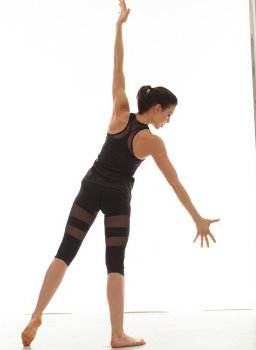The benefits of stretching for general flexibility and muscular health
It is important to incorporate flexibility training into a well-rounded fitness routine.
As winter roars onward, we find ourselves well immersed in the frigid cold of February.
While there are many splendid snowy activities to enjoy in the wintery wonderlands around the world, often, despite the best thermals, the cold can still chill us to the bone – and subsequent muscle.
Over time this frequent exposure to the cold inevitably affects our body. Colder temperatures and drier air lead to stiffer, tighter muscles and joints, leading to a lose of flexibility, which can result in permanent changes in normal muscle function and posture.
As such, it is important to incorporate flexibility training into a well-rounded fitness routine.
So let us pause for a moment, pull on our favorite onesie and settle in for a quick refresher on all things stretching!
While the focus of this piece is on stretching for general flexibility, I would first like to clear up some common confusion and misconceptions about stretching and its contraindications and benefits. Stretching is typically regarded in three possible scenarios: Stretching prior to intense physical exertion – as in a warm up; stretching immediately following a workout; and stretching for flexibility with no timely association to a workout.
Stretching prior to intense physical activity is generally not recommended as it has been shown to negatively affect reaction time, explosiveness, and muscle strength, with little evidence that it prevents injury.
In other words, stretching following a workout is recommended in order to maintain the body’s status quo.
Evidence suggests that stretching immediately following an intense workout will release tension developed during the workout and helps return the contracted muscles to their resting length prior to the workout, but not necessarily immediately increase muscle length. In other words, stretching following a workout is recommended in order to maintain the body’s status quo. So for those of you who like to skip the stretching portion at the end of your fitness class or workout to get to the locker room first… (ahem – hint hint, wink wink, yes I’m talking to you)… I’d recommend rethinking this habit!
Finally, there is stretching on its own, independent of a workout.
This is the ideal situation to increase range of motion and gain flexibility.
Flexibility is important to maintain a healthy posture and allow our joints to remain mobile, thus reducing general risk of injury, especially as we age and our muscles become less supple and pliable.


Static stretching techniques involve holding a position for a given length of time and do not involve use of motion as in dynamic and ballistic stretching.
For the purposes of this article, I am speaking about general forms of static stretching as it relates to general flexibility and range of motion.
Static stretching techniques involve holding a position for a given length of time and do not involve use of motion as in dynamic and ballistic stretching. (For a more detailed definition of the various types of stretching see reference #1)
Ideally, we should perform a full stretching routine 2-3 times per week, which can be done in as little as 10-20 minutes. Stretches should be held for at least 30 seconds and up to a minute.
Thirty seconds generally allows enough time for the muscle to surpass what is known as the “stretch reflex”, an automatic muscle contraction in response to stretching the muscle meant to protect against sudden and unintended stretches.
Stretching not only maintains and increases flexibility, but also increases circulation, stimulates digestion, balances hormones and calms the nervous system.
Once the body recognizes that we are deliberately easing the muscle into a stretch, this reflex passes and allows for further lengthening of the muscle fibers.
It is important to pick a well-rounded, total body stretching routine and stick to it. Consistency and regularity are key. When certain areas of the body are tight and others are not, it is difficult to get the full benefit of a stretch and (stretching/normal workouts) can even create further imbalances. There are many great routines available online and I recommend picking the one that most appeals to you.
Stretching not only maintains and increases flexibility, but also increases circulation, stimulates digestion, balances hormones and calms the nervous system. These combined benefits profoundly shift the way our brains operate thus boosting our mood and improving mental productivity and resilience to stressors. Stretching induces a whole body relaxation response and creates an ideal opportunity for us to check in with ourselves both mentally and physically: a moving meditation…






